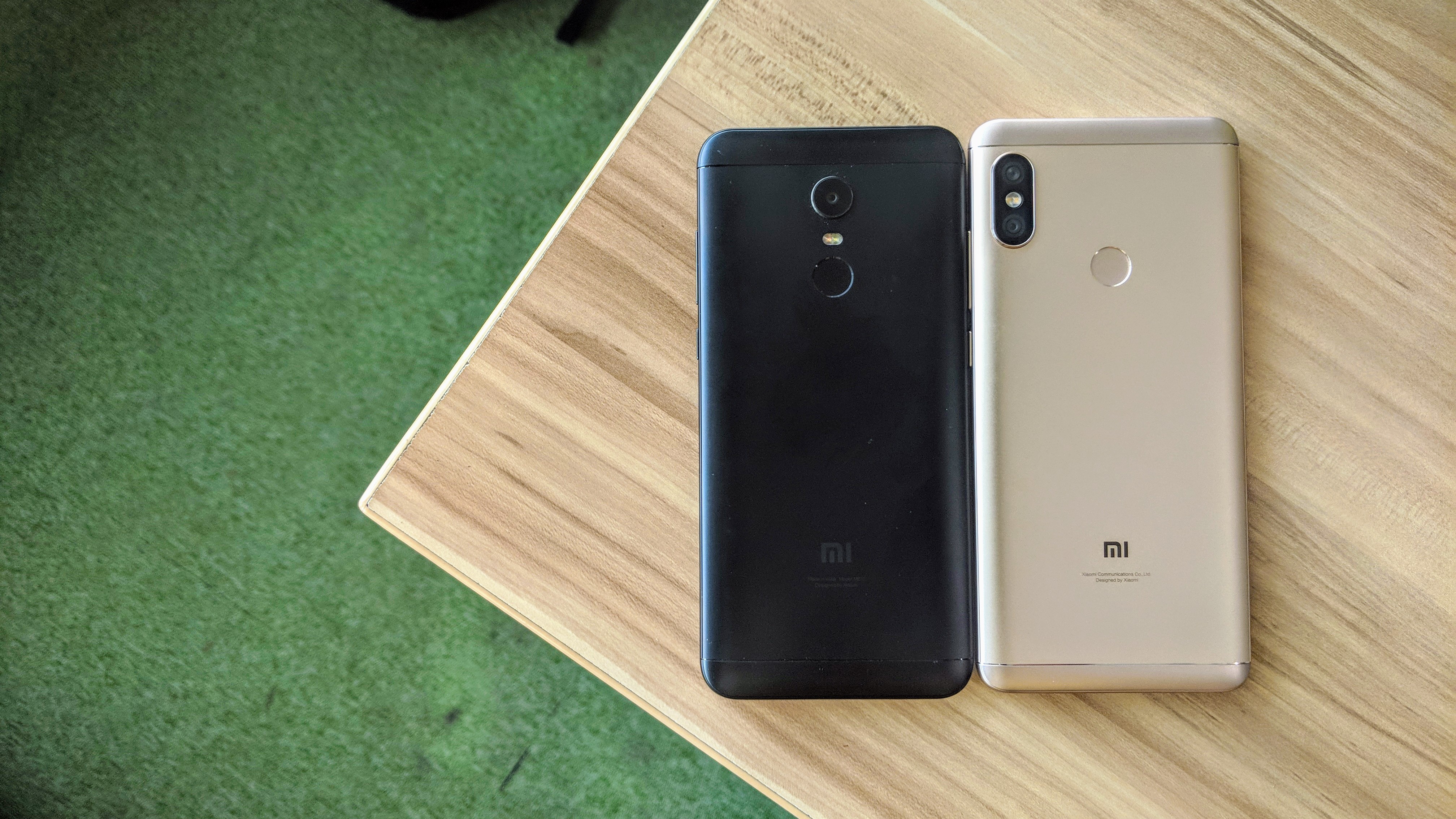Everything you need to know about the Redmi Note 5 and the Note 5 Pro
All your queries answered

Xiaomi’s new budget phones— the Redmi Note 5 and the Note 5 Pro have become the biggest news in the Indian smartphone industry in 2018. More so because the Redmi Note series has been people’s favourite in the sub 15k price range. Also, the company has seen immense growth and awareness in India over the past couple of years, reason being their good quality value for money products.
Much before the release, we’ve been getting a lot of queries about how the device is going to be, what will be its price and so on. We were later bombarded with a lot of questions as soon as the phones went official in India. In this post, we have addressed all those queries and tried to answer as many of them as possible.
Without further ado, let’s begin with the most common question, which is...
What’s the difference between the Redmi Note 5 and the Note 5 Pro?
First, the Redmi Note 5 is the basic variant , while the Redmi Note 5 Pro carries more power and skills. The Redmi Note 5 comes packed with the same internals as the Redmi Note 4 with a better looking 5.99-inch display with 18:9 aspect ratio. On the other hand, the Redmi Note 5 Pro is the first phone to ship with the Snapdragon 636, and also the first from Xiaomi to have a 6GB RAM under this price.
The real difference is in the camera department, where the Redmi Note 5 has a 12-megapixel camera onboard. On the front, there is a 5-megapixel selfie camera. In contrast, the Redmi Note 5 Pro sports a 12-megapixel primary snapper and a 5-megapixel secondary camera. On the front, there is a 20-megapixel camera with a f/2.2 aperture.
The display and battery is similar on paper, but in real the display on the Redmi Note 5 Pro looks better.
Sign up for breaking news, reviews, opinion, top tech deals, and more.
For more details, you can read the face to face comparison of the Redmi Note 5 vs Note 5 Pro.

How many variants are available?
Both phones come in two variants—
Redmi Note 5 with 3GB RAM and 32GB storage at Rs 9,999
Redmi Note 5 with 4GB RAM and 64GB storage at Rs 10,999
Redmi Note 5 Pro 4GB RAM and 64GB storage at Rs 13,999
Redmi Note 5 Pro 6GB RAM and 64GB storage at Rs 16,999
How is the camera performance?
The Note 5 is an improvement over the Note 4 but if camera sits on of your top preferences, then you should consider the Note 5 Pro.
The perfect reference here would be the Mi A1. The rear camera is at par with the Mi A1’s, and even better in some cases. Under this price, it is a better camera to have then other top phones.
What are the sensors used?
Both the phones have an accelerometer, proximity sensor, light sensor, gyroscope, pedometer and IR sensor.
Do they support dual SIM and microSD card?
Yes, both the phones support dual SIM, but have a hybrid slot. Meaning, you can either use two SIMS or one SIM with a micro SD up to 256GB.
Is the display glass protected?
There is a protection on the display but the company has not given any word on it.
It's not the first time that Xiaomi has avoided speaking about it though.
Do they support fast charging?
Xiaomi says both the phones support fast charging but the company is bundling a 5W charger in the box. So you'll have to invest in a fast charger separately. They take around 2 hour 30 minutes to get charged from 0-100%.
Can you play graphic intensive games?
Yes, both the phones can handle any game available on Play Store. We have played games like Modern Combat, Dawn of Titans and even Real Racing 3, and all were handled quite effortlessly. The only difference between the two is that the Redmi Note 5 Pro can run games for a longer stretch, whereas the Note 5 starts stuttering if there are too many apps running in the background.
The was mild heating on the screen and back, but it wasn't unbearable.
Do they run latest software?
Both have the latest MIUI 9, but sadly, you won't get the latest version of Android. Both run older Android Nougat. There's no word on when the latest Android 8.0 Oreo will be available on the two.
How is the sound quality?
The sound quality is just ok from the loudspeaker. Both sport mono speakers, but they are clear and clearly audible when played in a silent room, but suffers in noisy surrounding. Sound from the earphone is the same as Redmi Note 4.
Are they durable?
Yes, both the phones are pretty solid, thanks to aluminium body. Also they have plastic head and chin, which means it can sustain drops until dropped forcefully or at pressure sensitive points.
How is the battery life?
Both have a 4000mAH battery, that easily lasts for 13-14 houra on single charge. That, with 10-15 calls, lots of IMs, an hour of audio listening and also 30 minutes of gaming. The idle battery life is incredibly long too.
Are they water resistant?
No.
Do they have physical navigation keys?
No, they have on-screen navigation keys. Xiaomi has removed the on-body capacitive buttons to increase the real estate for display and thin down bezels.
Do they support 4K video recordiing?
The Redmi Note 5 supports 4K recording at 30fps but strangely the Pro variant lacks.
Do they have face unlock feature?
Currently, none of the phones have face unlock. Xiaomi has promised to roll out the feature for Note 5 Pro in future updates.
Do they support USB OTG?
Yes, both the phones support USB OTG.
Which is a better buy?
If you are not a Redmi Note 4 or a Moto G5 Plus user, you can consider the Redmi Note 5 3GB RAM variant for a budget under 10K. Our vote is with the Note 5 Pro 4GB variant, which is a value for money phone overall. It costs less than 15 grand and has tons of power to sail you through almost everything you throw at it.
The 6GB RAM variant does carry some extra power, but it doesn't make sense to spend an extra 3K for that. You would hardly see any difference in performance in day to day usage.

Sudhanshu Singh have been working in tech journalism as a reporter, writer, editor, and reviewer for over 5 years. He has reviewed hundreds of products ranging across categories and have also written opinions, guides, feature articles, news, and analysis. Ditching the norm of armchair journalism in tech media, Sudhanshu dug deep into how emerging products and services affect actual users, and what marks they leave on our cultural landscape.
His areas of expertise along with writing and editing include content strategy, daily operations, product and team management.